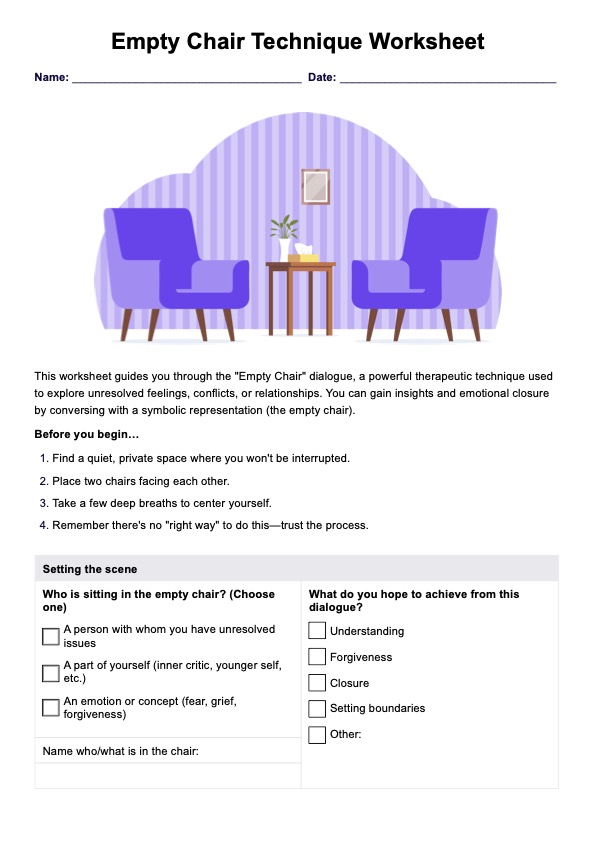Not necessarily. This technique involves a bit of roleplay on the part of the client because they have to assume the position of the person they are supposedly talking to in the scenario. It might be difficult because they might not be emotionally ready to be able to do that, so this is something you should only use if they are emotionally ready.

Empty Chair Technique Worksheet
Use the Empty Chair Technique Worksheet to help clients explore unresolved emotional issues to start their journey of emotional healing and personal growth.
Use Template
Empty Chair Technique Worksheet Template
Commonly asked questions
No. This worksheet only serves as a writing exercise to help them organize their thoughts. Being able to go through the scenario via the technique is still different and requires more effort, especially emotionally.
The worksheet aids in structured exploration, fostering self-awareness, building confidence, and enhancing resilience to help the client undergo the roleplay that this technique requires.
EHR and practice management software
Get started for free
*No credit card required
Free
$0/usd
Unlimited clients
Telehealth
1GB of storage
Client portal text
Automated billing and online payments











